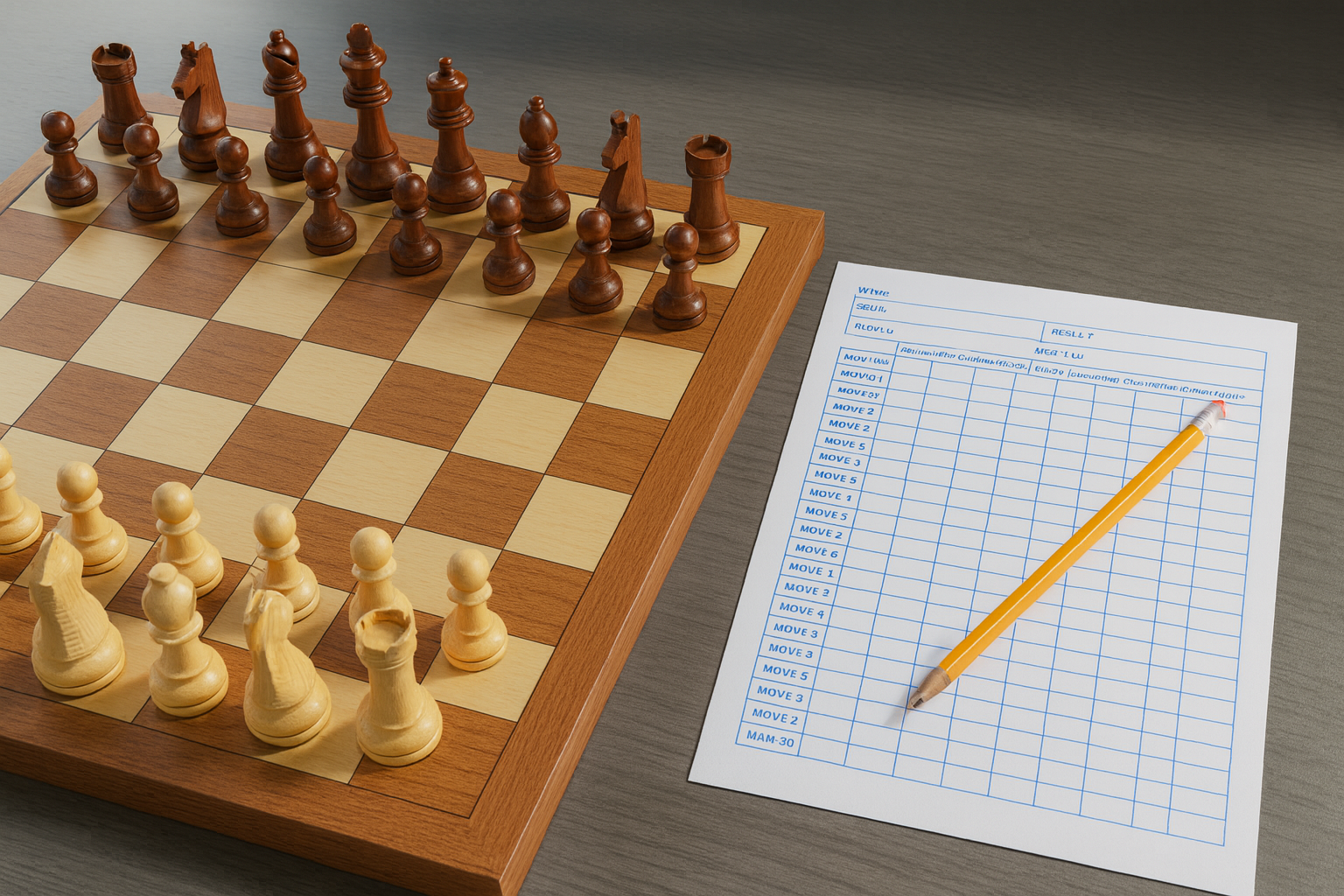· The Chess Blog Team · Guide · 2 min read
How to Record Your Chess Games Like a Pro!
Learn the simple secrets of chess notation to record, analyze, and share your games like a true professional. It's easier than you think!

Ever wondered how top chess players keep track of every single move? It’s not magic, it’s chess notation! And guess what? It’s super easy to learn. Recording your games lets you relive those epic battles, analyze your blunders, and share your brilliant strategies. Let’s dive in!
Cracking the Chess Code!
Don't just play, record your masterpiece! Chess notation is your secret superpower. Learn the simple codes that turn moves into magic.
Your Chess Army's Secret Identity
Each piece has a unique letter. Pawns are so humble they don't even get one!
King
K
Queen
Q
Rook
R
Bishop
B
Knight
N
Pawn
—
The Board: Your Chess Canvas
Every square has a name. To record a Knight's move to g4, you simply write: Ng4
The Board: Your Chess Canvas
Columns (files) are labeled ‘a’ through ‘h’ from left to right, and rows (ranks) are numbered ‘1’ through ‘8’ from bottom to top. So, the bottom-left square is a1, and the top-right is h8. Easy, right?
Board Basics:
- Files: a → h (left to right)
- Ranks: 1 → 8 (bottom to top)
- Example: bottom-left square is a1, top-right is h8.
Your Chess Army’s Secret Code
Pawns are the humble foot soldiers and don’t get a letter – you just write the square they move to!
Writing Down the Action
Simple Moves:
- White pawn to e4 → write
e4 - Black knight to f6 → write
Nf6
Captures & Special Moves
- Capture: Use ‘x’ – for example,
exd5(pawn on ‘e’ takes ond5). - Check: Add a
+at the end of the move (e.g.,Qh5+). - Checkmate: Use a
#(e.g.,Qh7#). Game over! - Castling:
O-Ofor kingside castling, andO-O-Ofor queenside castling.
Why Bother Recording?
- Improve Your Game: Go over your games to spot mistakes and find better moves.
- Share Your Brilliance: Show off your epic wins to friends and fellow players.
- Personal Chess Diary: Keep a record of your chess journey and see how far you’ve come!
So next time you’re at the board, grab a pen and paper. You’ll feel like a true tournament player in no time!




